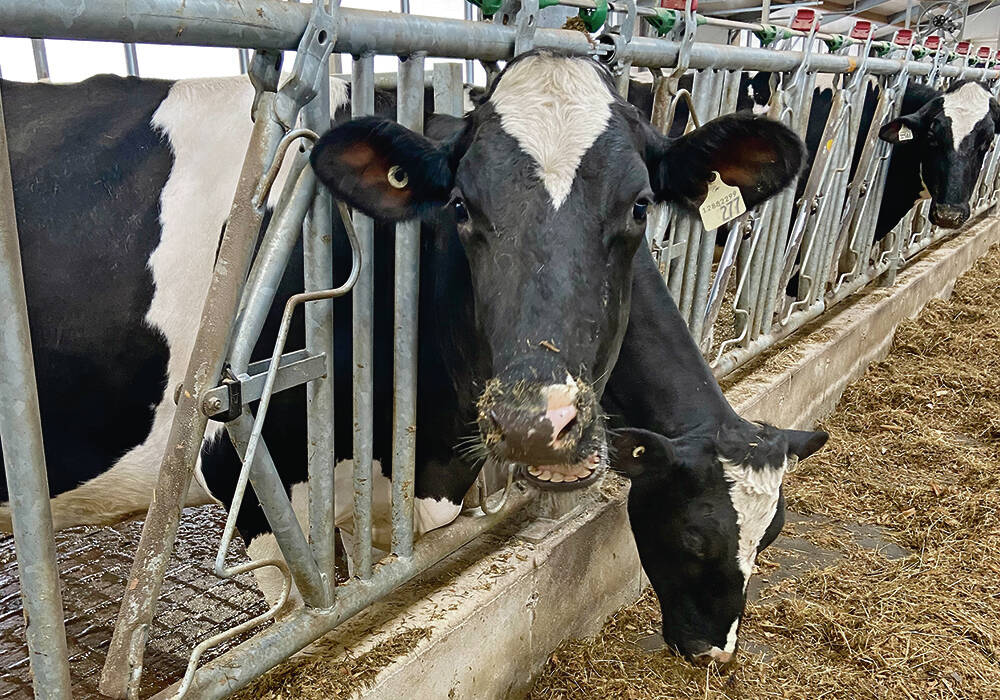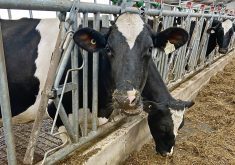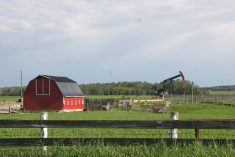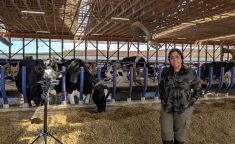It’s not been an easy decade for many purebred cattle breeds.
“The drought and then BSE … it took a real toll on cattle people in general,” said Reed Rigney, president of the Alberta Blonde d’Aquitaine Association.
The number of Blondes has stabilized recently, but Rigney estimated there’s around 400 breeding females.
“They’re not what they were 20 years ago,” he said of the numbers.
He noted in the 1980s and early ’90s the bulls were easy to sell as the continental breeds were popular to get more growth and muscle on cattle, but now Angus is more popular.
Read Also

Alberta Milk opens annual hospital fundraiser
Alberta Milk embarks on holiday season campaign to raise money for Alberta Children’s Hospital Foundation
“It’s been getting more and more difficult to sell the bulls,” he said.
French breeds are doing better in Eastern Canada, but the U.S. is pushing for Angus, he said.
Purebreds continue to flourish in many niche markets, but registration numbers show the Angus breed continues to dominate, said Doug Fee, executive vice-president of the Canadian Beef Breeds Council.
“In general, the total number of registered beef cattle dropped significantly reflecting the overall reduction of the cow herd since 2003,” he said.
He noted some of the smaller breeds occasionally seem to drop because breeders don’t choose to register that year, so the actual numbers may not reflect true trends.
Statistical picture
Fee provided stats on a variety of beef cattle breeds, comparing their 2003 numbers to 2011. They show breeds like Braunveih has stayed in a stable range, as has Gelbvieh, Shorthorns, Lowlines, and Speckle Park. However, while some of those like Gelbvieh show numbers over 1,000 animals, Speckle Park is stable between 60 to 100 animals registered a year.
Fee said numbers for other breeds, such as Hays Convertor, have dropped from over 100 to less than 20. Highland cattle breeders didn’t report last year, but since 2003 haven’t reported more than 45 registrations a year, though Fee noted he’s seen Highland cattle at shows. Pinzgauer breeders only reported 11 registrations in 2011, while Luing cattle, a breed Fee had thought disappeared, reported some registrations in 2010 and 2011. Breeds such as Charolais, Limousin and Simmental each reported several thousand registered, while Maine Anjou have dropped from 340 registrations in 2003 to 274 in 2011.
“I do not see any breeds that have totally disappeared although several are in danger of losing the critical mass necessary to sustain viability,” Fee said.
Ted Jansen, the representative for the Canadian Lowlines Association to the Canadian Beef Breeds Council, said that breed is seeing more sales and numbers in Alberta are rising.
“More people are buying them, but it hasn’t been a big market here like it has been in the States,” he said.
Welsh blacks are attracting new breeders every year, but people have been retiring at the same time, according to Randy Scott, president of the Canadian Welsh Black Cattle Society. The result is they are holding their own, he said, estimating there’s probably about 500 to 600 head of purebred females. He said the population used to be higher, though there weren’t necessarily more breeders active than there are currently.
Mark Stewart, president of the Alberta Texas Longhorn Association, said there are thousands of longhorn cows.
“The roping market or the typical longhorn market has been tough,” he said.
The last few years has seen the association gaining more members and more animals being born, he said.
The Alberta Galloway Association has seen its membership jump in recent years. President Steve Schweer said they’ve gone from seven members in 2011 to about two dozen in 2012.
“It’s starting to gain a little more popularity here in the last year or so,” he said.
He estimated there’s about 500 purebred papered Galloways in Alberta — only a third of what there were 15 years ago. Some attribute the decline in popularity of the Galloways to the influx of continental and larger-frame cattle, but some recent bull sales have pulled good numbers, he said.
“Looks like we’ve got some momentum,” Schweer said.














